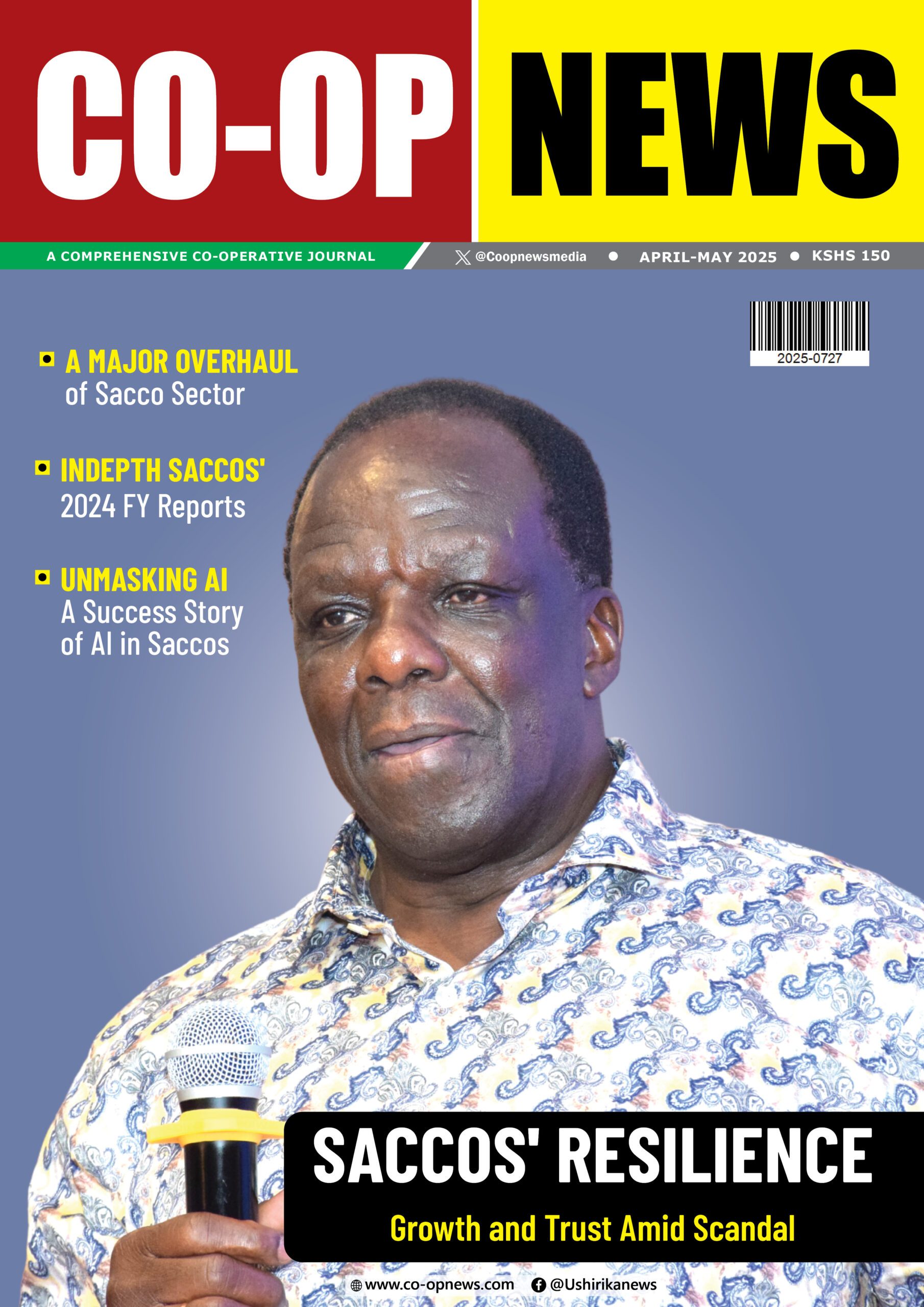Cooperative societies have sought Government intervention to enhance their efficiency and performance.
Under the Cooperative Alliance of Kenya (CAK), the cooperatives have identified financial cooperatives, specifically Saccos, Housing Cooperatives and Investment Cooperatives, in urgent need of reforms to realize potential.
The above are increasingly emerging as key players in savings mobilization and extending affordable credit, delivering affordable and decent housing in addition to enabling members to invest and own properties.
In a memorandum presented to Cooperatives and MSME Cabinet Secretary Simon Chelugui, CAK wants the Government to address factors inhibiting Saccos from harnessing the underlying potential in sectors such as financial services, coffee, tea, dairy and rice.
In the financial services sector, the umbrella body wants Saccos included in the national payment system to enable them clear cheques and also inter-lend among each other.
Plans to have the Central Liquidity Facility in place and address these challenges are in place.
In its absence, Saccos rely on banks to clear cheques as well as borrow from banks at high-interest rates.
This has seen an increase in non-performing loans, and the latest attempt is to allow Saccos with high liquidity to lend to other Saccos at low-interest rates.
Through the financial services sector, the umbrella body wants a savings culture entrenched in the country as well as Information Communication Technology addressed.
For years, the high cost of agricultural production has eroded farmers’ earnings, hence blunting agricultural-based Saccos’ competitive edge.
A number of Saccos in Kenya are agriculture based and have their core members as farmers.
Consequently, any effort to improve agricultural revenues will significantly improve member contribution and, in turn, Saccos’ capitalization and liquidity.
Tea
Tea has remained a key export earner for Kenya, with a global standing. A number of Saccos in Kenya, notably those in the Mount Kenya region, Rift Valley and Nyanza and Western regions, are powered by the green leaves.
However, the high cost of production addressed, such as fertilizers, energy costs and the high cost of factory machinery and packaging materials for value addition, will address challenges associated with low capitalization and liquidity.
The memorandum has identified that tea-based Saccos have the opportunity to diversify their membership to include other value chains.
Coffee
Under coffee, CAK projects an increase in production and subsequent price increase from an average of KSh75 to Ksh150 per kilo of cherry.
The proposal seeks to increase production from the current 2kg per tree to 6kg per tree.
Access to markets, extension services, farm inputs, low coffee yields and inadequate support for the farmer by government agencies are areas it sees interventions.
It also wants capacity building for the National Coffee Cooperative Union (NACCU) and the Kenya Cooperative Coffee Exporters to roast and market coffee locally and internationally and acquire the requisite machinery for NACCU to roast and brand its own coffee.
The initiatives include capacity building of farmers and cooperative societies within the next five years.
Dairy
The memorandum underscores the need to tap the opportunities in the dairy sector through milk production, processing, marketing and retailing.
High taxes on imports, low payments to farmers’ cheap milk, and milk hawking leading to low milk prices are some of the areas it wants to be addressed.
It wants improved farming practices undertaken such as breeds and animal feeds, to increase milk production from 1.5 million litres per day to 3 million litres. This, it argues, needs to see milk production increase to 10m litres per cow per day.
Rice
CAK is encouraged by the rising consumption of rice in the country, estimated at 300,000 metric tonnes per annum.
Data indicates that Kenya only produces a maximum of 80,000 metric tonnes, and the deficit is plugged through imports.
With only 20,000 hectares under rice production, notably in Kirinyaga, Western, Nyanza and coastal regions, encouraging many farmers to venture into rice growing has the potential of generating an income for them which they will, in turn, pool through Saccos.
This has the potential to increase membership to Saccos.
“With the increase in membership, the Sacco will have the opportunity to grow the loan book as a result of increased membership,” it states.
To help champion specific needs, it seeks the creation of a federation, the Kenya Federation of Rice Growers.
According to the Sacco Supervision Annual Report 2021, agricultural-based Saccos have the majority of members. However, their asset base and deposits pale that of teacher-based and Government based Saccos.
To help spearhead tangible reforms in the above sectors, CAK is keen on forming federations during the year.





